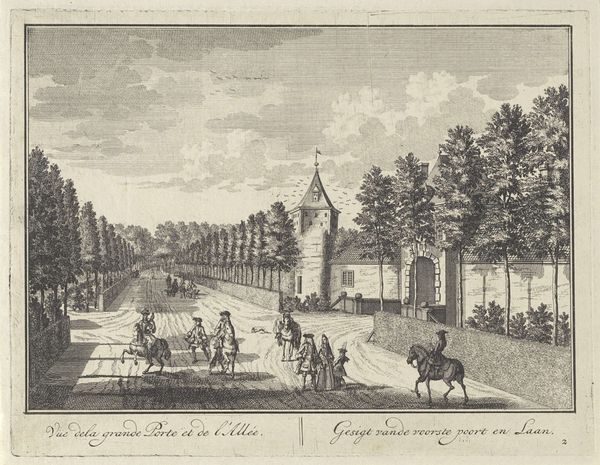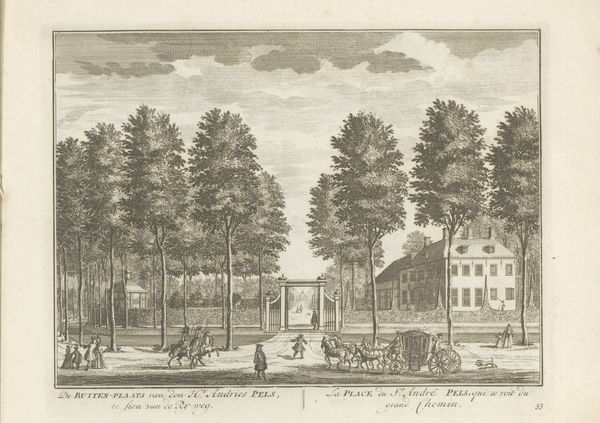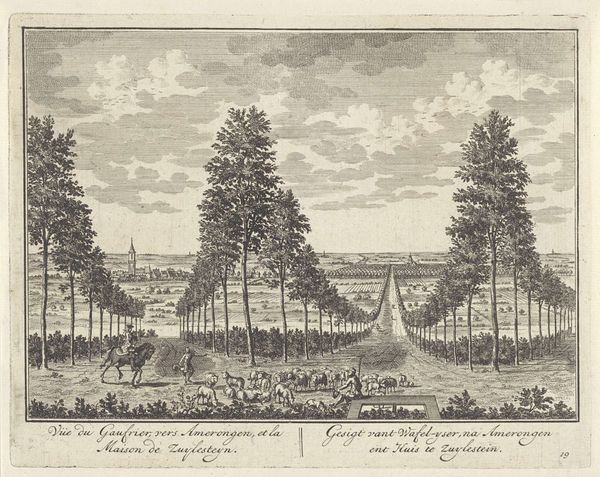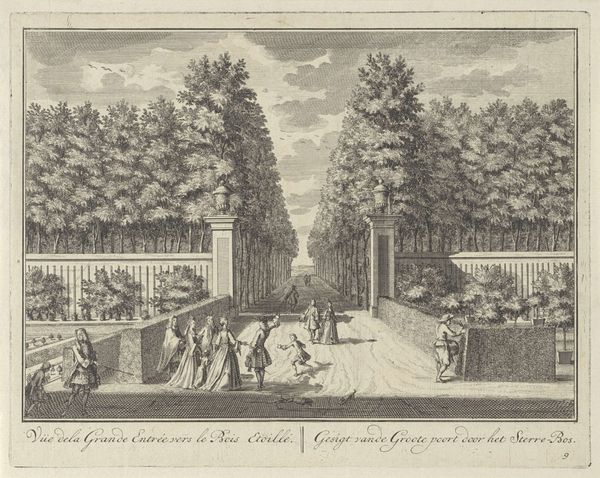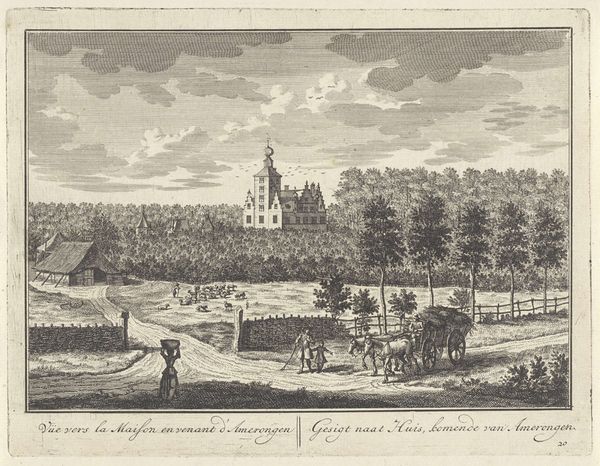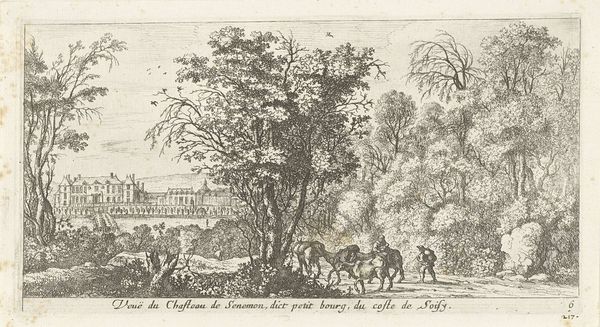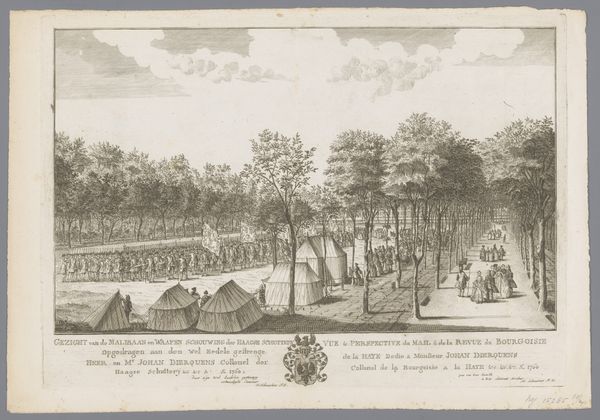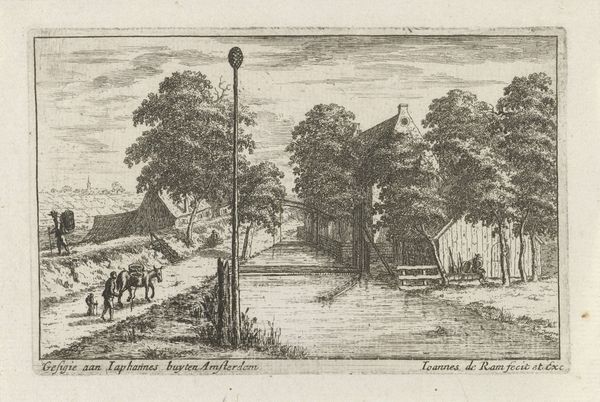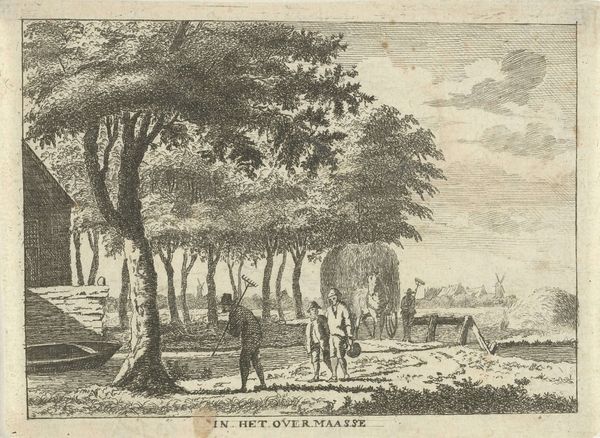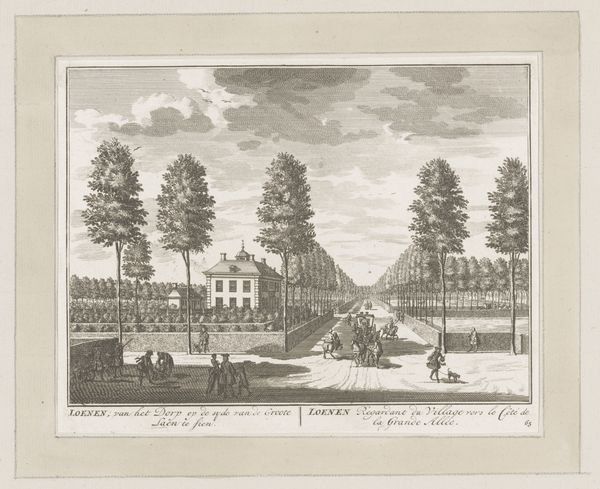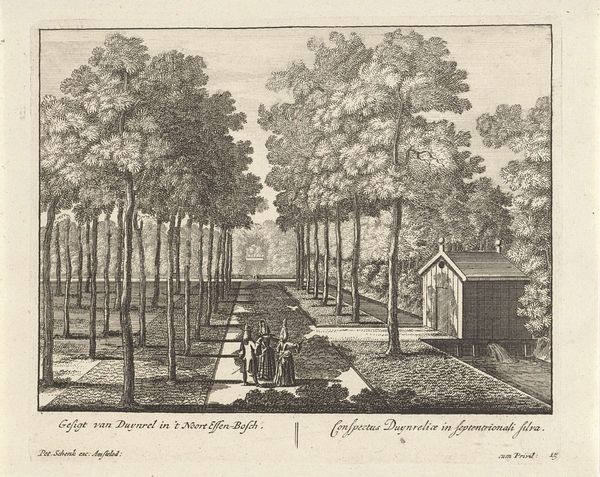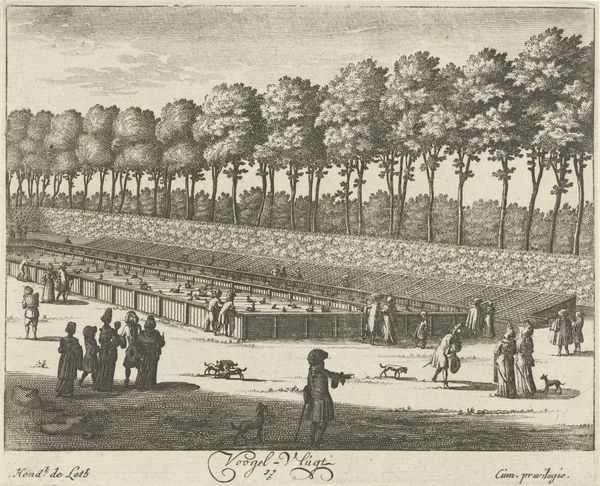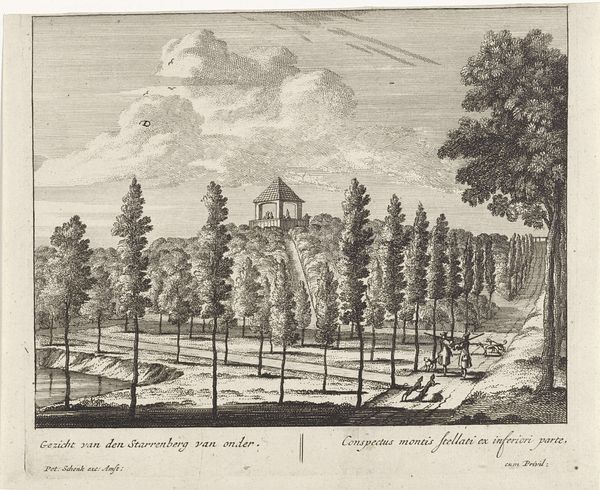
Gezicht in de laan naar het Wafelijzer bij Kasteel Zuilenstein 1682 - 1726
0:00
0:00
print, engraving
#
dutch-golden-age
# print
#
old engraving style
#
landscape
#
line
#
cityscape
#
engraving
Dimensions: height 165 mm, width 210 mm
Copyright: Rijks Museum: Open Domain
Daniël Stopendaal created this print of the road to the Wafelijzer near Zuilenstein Castle using etching. The dominant symbol here is the long, straight avenue of trees, a recurring motif in art and landscape design signifying order, control, and the imposition of human will upon nature. Think of the avenues at Versailles, conceived by André Le Nôtre, which extend limitlessly, projecting power. This motif finds echoes in Roman city planning, where straight roads symbolized the empire's reach, and even further back to the ancient Egyptians, whose obelisks and processional pathways asserted divine authority. The repetition is not just aesthetic, but psychological. The avenue evokes a sense of inevitability and direction. It embodies our subconscious desire for order, yet also hints at the potential for monotony and loss of freedom. This image, like those avenues of old, is a testament to our enduring quest to structure and control the world around us. A quest that, like the road itself, continues to unfold.
Comments
No comments
Be the first to comment and join the conversation on the ultimate creative platform.
